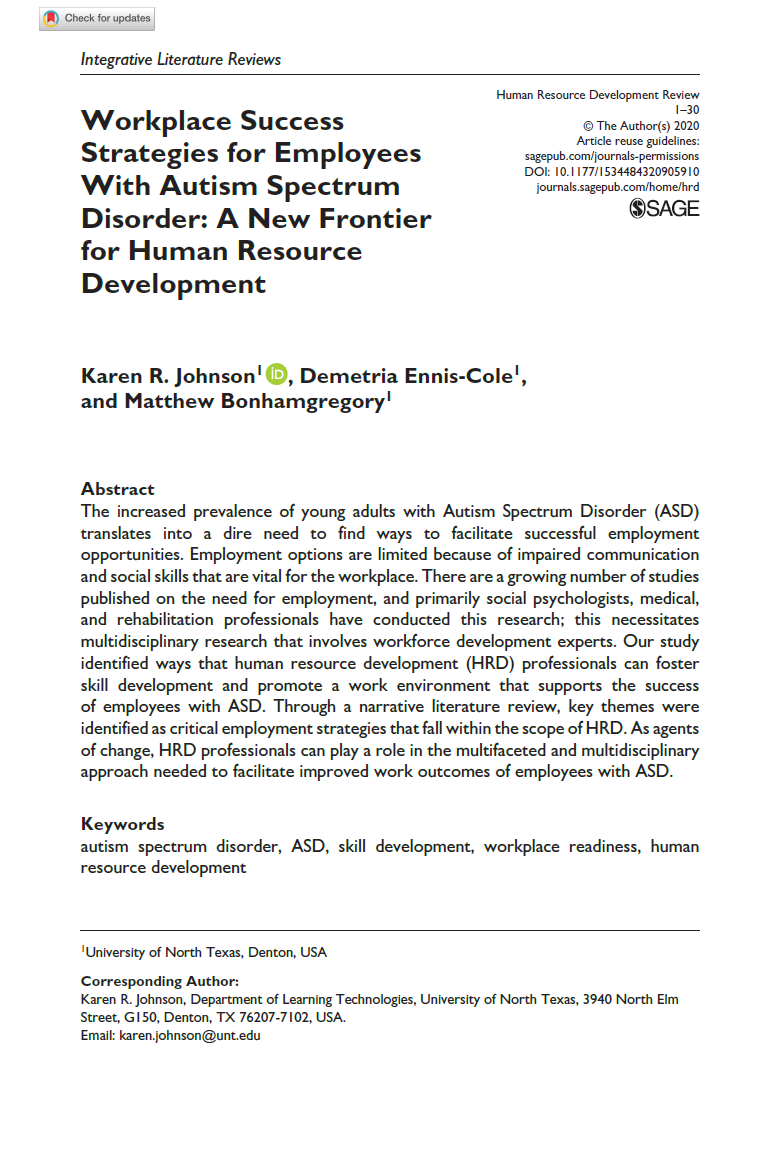Workplace Success Strategies for Employees with Autism Spectrum Disorder:
A New Frontier for Human Resource Development
A New Frontier for Human Resource Development
Abstract
The increased prevalence of young adults with Autism Spectrum Disorder (ASD) translates into a dire need to find ways to facilitate successful employment opportunities. Employment options are limited because of impaired communication and social skills that are vital for the workplace. There are a growing number of studies published on the need for employment, and primarily social psychologists, medical, and rehabilitation professionals have conducted this research; this necessitates multidisciplinary research that involves workforce development experts. Our study identified ways that human resource development (HRD) professionals can foster skill development and promote a work environment that supports the success of employees with ASD. Through a narrative literature review, key themes were identified as critical employment strategies that fall within the scope of HRD. As agents of change, HRD professionals can play a role in the multifaceted and multidisciplinary approach needed to facilitate improved work outcomes of employees with ASD.
The increased prevalence of young adults with Autism Spectrum Disorder (ASD) translates into a dire need to find ways to facilitate successful employment opportunities. Employment options are limited because of impaired communication and social skills that are vital for the workplace. There are a growing number of studies published on the need for employment, and primarily social psychologists, medical, and rehabilitation professionals have conducted this research; this necessitates multidisciplinary research that involves workforce development experts. Our study identified ways that human resource development (HRD) professionals can foster skill development and promote a work environment that supports the success of employees with ASD. Through a narrative literature review, key themes were identified as critical employment strategies that fall within the scope of HRD. As agents of change, HRD professionals can play a role in the multifaceted and multidisciplinary approach needed to facilitate improved work outcomes of employees with ASD.
Johnson, K. R., Ennis-Cole, D., & Bonhamgregory, M. (2020). Workplace Success Strategies for Employees With Autism Spectrum Disorder: A New Frontier for Human Resource Development. Human Resource Development Review, 19(2), 122–151. https://doi.org/10.1177/1534484320905910
*AHRD Human Resource Development Cutting Edge Award Recipient

